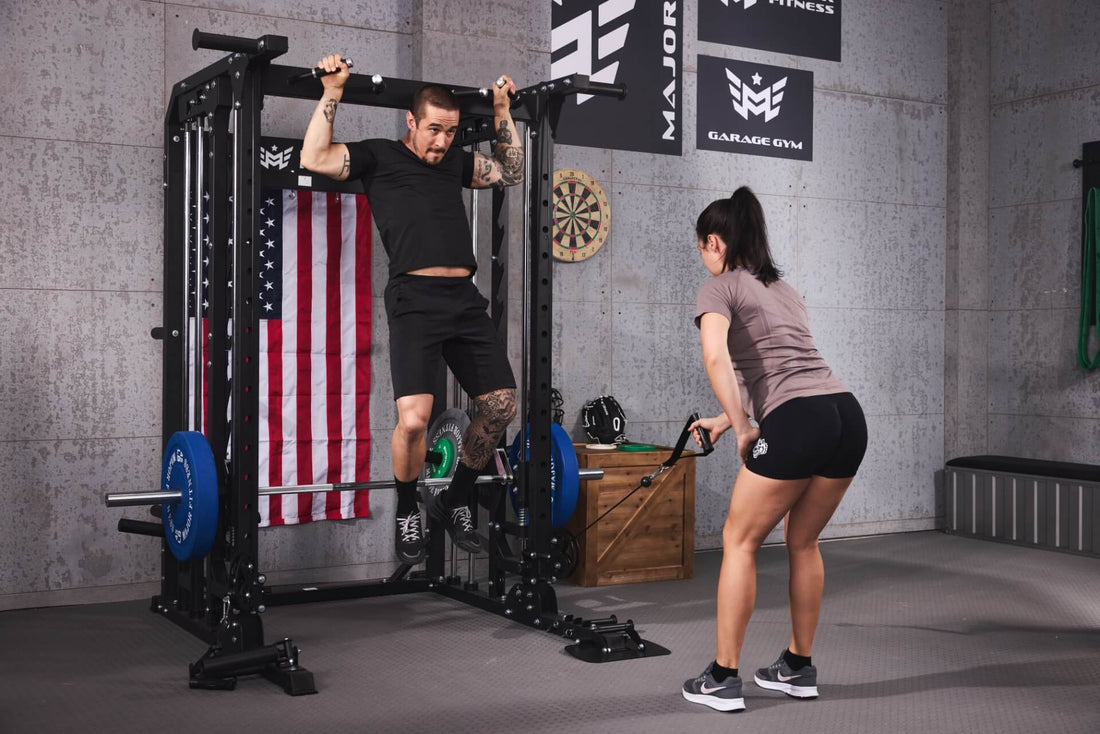
When it comes to back workouts, the debate surrounding the effectiveness of reverse grip lat pulldown vs lat pulldown is intense. Both exercises target the latissimus dorsi, but their different grips change the dynamics of the exercise entirely. Understanding these differences can help you decide which exercise aligns better with your fitness goals.
Understanding the Lat Pulldown
The traditional lat pulldown is a staple in many workout routines. Performed on a cable machine, the exercise involves pulling a bar down towards your upper chest while keeping your torso stationary. The primary muscles targeted by this exercise are:
- Latissimus Dorsi
- Teres Major
- Rhomboids
- Trapezius
Many fitness enthusiasts and professionals favor this exercise for its ability to broaden the back and improve overall upper body strength.
Benefits of Traditional Lat Pulldown
The lat pulldown offers several key benefits:
- Wide Grip: The wide grip used in traditional lat pulldowns enhances the width of your latissimus dorsi, contributing to that V-taper look that many bodybuilders desire.
- Core Activation: This exercise also engages your core, as you need to stabilize your body throughout the movement.
- Upper Back Engagement: The traditional lat pulldown heavily recruits the upper back muscles, which supports posture and reduces the risk of back-related injuries.
The Reverse Grip Lat Pulldown
On the other hand, the reverse grip lat pulldown requires you to grip the bar underhand, with your palms facing you. This small change in grip can make a significant difference in muscle engagement:
- Biceps
- Latissimus Dorsi
- Forearms
The reverse grip shifts a portion of the workload to the biceps and forearms, providing a different type of stimulation compared to the traditional lat pulldown.
Reverse Grip Lat Pulldown Benefits
What makes the reverse grip lat pulldown stand out?
- Better Bicep Involvement: The underhand grip requires more action from the biceps, making it a dual-purpose exercise that strengthens both your back and arms.
- Improved Elbow Position: The reverse grip places your elbows in a more natural position, potentially reducing the strain on shoulder joints.
- Different Muscle Activation: This variation targets the lower portion of the latissimus dorsi more effectively than the traditional lat pulldown, offering a more complete back workout.
Biomechanics: How Grip Changes Muscle Engagement
The biomechanical differences between these two exercises are crucial for understanding their effectiveness. The grip directly influences the range of motion and muscle activation:
- Range of Motion: The traditional lat pulldown promotes a wider range of motion, emphasizing the width of the lats.
- Muscle Activation: The reverse grip variation recruits more of the biceps and lower lats, providing a varied stimulus.
Your choice between the two should depend on what areas of the back or arms you want to emphasize in your training.
What can satisfy both the reverse grip and the straight grip pull-up training? Major Fitness's All-In-One Home Gym Smith Machine is designed to support both reverse grip and straight grip pull-ups, providing a variety of grip options to help fully exercise the back, shoulder and arm muscles, and improve upper body strength and stability. Learn more.

Which is More Effective?
The effectiveness of an exercise depends largely on your fitness goals:
- If your goal is to build a wider back, the traditional lat pulldown may be more beneficial.
- If you aim to work on your lower lats and biceps simultaneously, the reverse grip lat pulldown could be your best bet.
Alternating between both exercises can provide a comprehensive approach to back development, ensuring no part of your back is neglected.
Expert Opinions
Most fitness experts agree that both variations should be included in a well-rounded workout program. According to several trainers, ensuring a balance between these exercises will lead to maximal muscle growth and functional strength:
"Integrating both lat pulldown exercises into your routine ensures you are targeting all aspects of your lats, as well as supporting muscles like the biceps, teres major, and even the core." - Fitness Expert
Common Mistakes to Avoid
Here are a few common mistakes people make when performing either exercise:
- Using Excessive Weight: Always start with a manageable weight to focus on form.
- Improper Form: Avoid leaning back excessively or using momentum to pull the bar.
- Neglecting Warm-Up: Properly warming up ensures your muscles are ready for the stress, reducing the risk of injury.
Focusing on technique will maximize the benefits and minimize the risk of injury.
Integration Into Your Workout Plan
It's essential to integrate these exercises into your workout plan intelligently:
- Warm-Up Sets: Begin with light weights to activate the muscles.
- Volume: Include 3-4 sets of 8-12 reps in your back workouts.
- Superset: Consider supersetting with rows or other back exercises for balanced muscle development.
Consistency and proper technique will lead to significant improvements over time.
Experimenting with both the reverse grip lat pulldown and the traditional lat pulldown can provide a diversified stimulus to your muscles, making your workout more efficient and less monotonous. Ready to amp up your back training? Plan your next workout session, and let both variations work their magic!




















